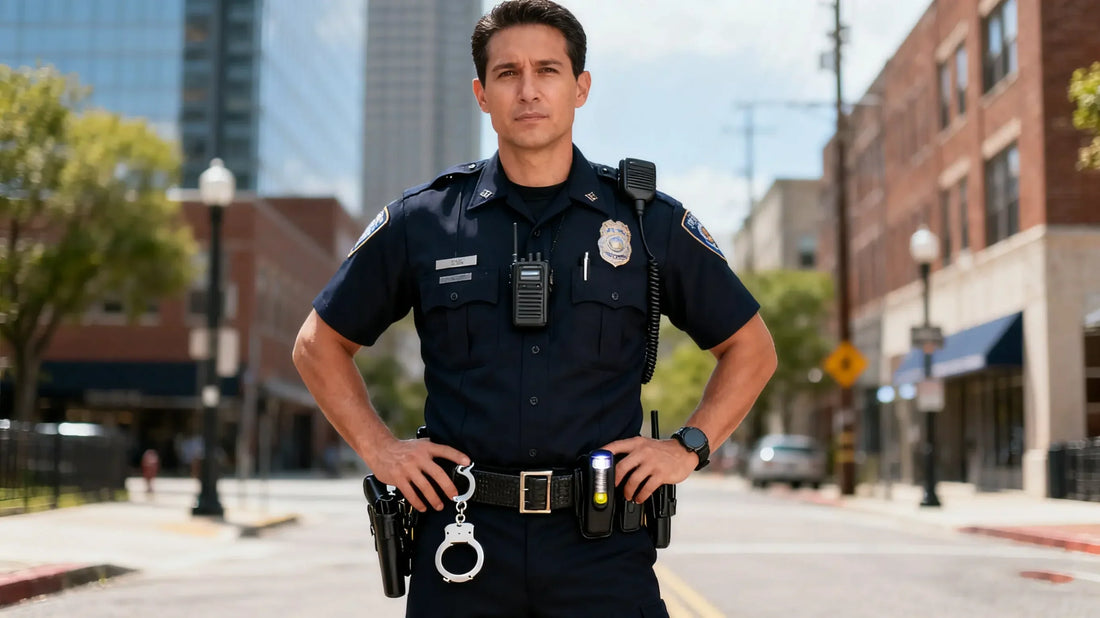
Police Belts in Action: Real Stories from the Field
Share
When it comes to law enforcement, every piece of equipment has a role to play. Among these, police belts are one of the most critical yet often overlooked items. Far more than a strap to hold up trousers, police belts serve as a mobile command center—equipped to carry handcuffs, radios, firearms, and essential tools officers need in the line of duty.
This article explores the role of police belts through real stories from the field, showing how this tactical gear keeps officers prepared, safe, and effective.
Table of Contents
1.Why Police Belts Are Essential
2.The Evolution of Police Belts
3.Police Belts in Real-Life Situations
4.Key Features of a Reliable Police Belt
5.Types of Police Belts
6.How Officers Maintain Their Belts
7.Conclusion: The Backbone of Law Enforcement
Why Police Belts Are Essential
Unlike ordinary belts, police belts are designed to carry heavy gear while maintaining comfort and durability. Officers often work long shifts, and a reliable belt ensures their tools are accessible at all times. Without a strong belt system, efficiency and safety can be compromised.
According to Police1’s gear guide
— one of the leading resources for law enforcement equipment — modern duty belts are designed to reduce strain while maximizing gear capacity.
The Evolution of Police Belts
Historically, law enforcement relied on leather belts with basic pouches. Today’s police belts use advanced materials like ballistic nylon, reinforced polymers, and modular MOLLE systems. This evolution has made belts lighter, stronger, and more versatile—allowing officers to carry more without sacrificing comfort.
Police Belts in Real-Life Situations
Crowd Control
During protests, police belts provide quick access to restraints, batons, and radios. Officers can communicate instantly and manage situations more effectively.
Night Patrols
A midnight patrol requires reliability. Police belts often hold flashlights and tasers, ensuring officers can respond quickly even in low visibility.
Emergency Response
In life-or-death scenarios, every second counts. Having medical kits or pepper spray attached to a belt can make the difference between escalation and resolution.
Key Features of a Reliable Police Belt
Strength & Durability – Must withstand weight and stress.
Comfort – Padding and adjustable straps reduce fatigue.
Accessibility – Gear must be easy to reach under pressure.
Modularity – Customizable pouches and holsters for different missions.
Types of Police Belts
Duty Belts – Standard belts for daily shifts.
Tactical Belts – Heavier gear setups for high-risk operations.
Training Belts – Lightweight options used during drills.
How Officers Maintain Their Belts
Regular Cleaning: Sweat and dirt can degrade materials.
Gear Checks: Ensuring holsters and clips are securely fastened.
Adjustments: Belts are often reconfigured depending on assignments.
FAQ About Police Belts
Q1: What gear is typically carried on police belts?
Most police belts carry firearms, handcuffs, radios, tasers, flashlights, and first-aid kits.
Q2: Are police belts heavy?
Yes, but modern designs use lightweight materials to reduce strain.
Q3: Do officers customize their belts?
Absolutely. Many officers adjust pouches and holsters based on duty needs.
Q4: Are police belts only for law enforcement?
No, tactical enthusiasts and security professionals also use similar designs.
Conclusion: The Backbone of Law Enforcement
In real-world policing, the police belt is more than gear—it’s a lifeline. From patrols to emergencies, police belts keep officers equipped, confident, and ready to respond.
Ready to explore the strength of tactical gear? Visit our tactical belts today and discover belts built for performance and reliability.
